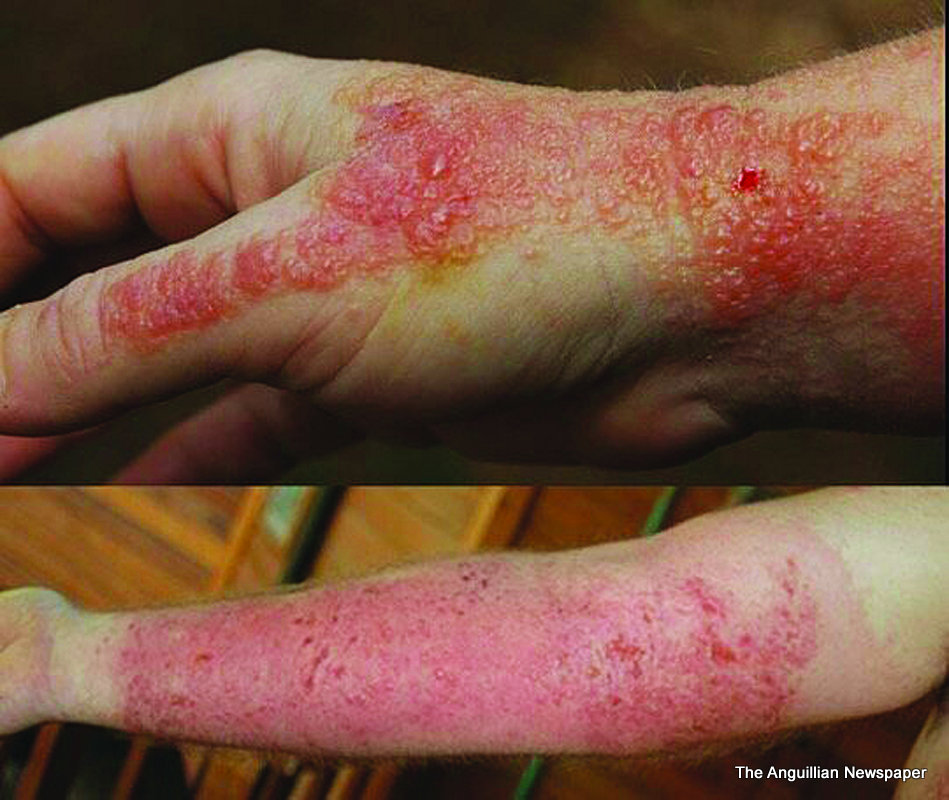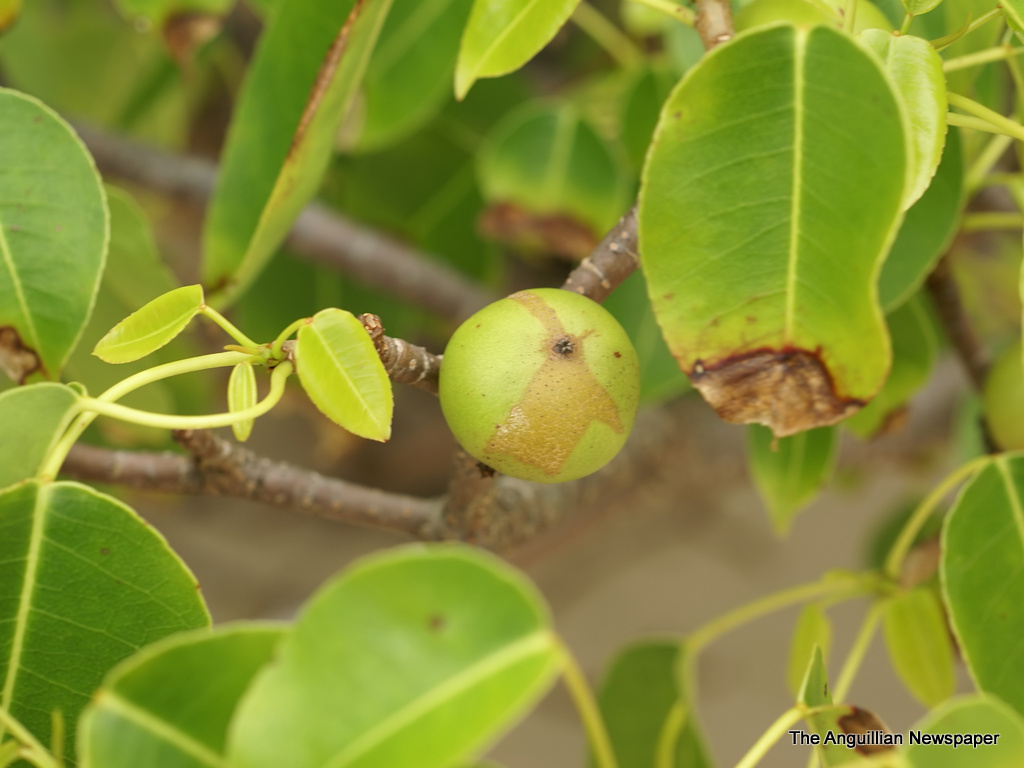One’s imagination may surmise that the Manchineel fruit can fit the scope of the morbid warning that God had given earth’s first couple when he told them not to eat the “forbidden fruit” because they would die. Well, perhaps not really, but we may infer that, indeed, the Manchineel tree and its fruit would aptly fit this category of nature’s forbidden fruits, as it is – without exception – poisonous.
Manchineel trees can be found among the vegetation upon the brow of sandy shores and in ponds of the Tropics. In Anguilla, these trees abound a distance away from our pristine beaches, and they are colloquially called Manchineedle trees. The dangers of this horrific sounding native name, among our local people, traditionally reflect the horrible stories told by our ancestors to inquisitive, vulnerable children who might have been tempted to take a bite of the appealing, poisonous fruit.
Closely resembling a delicious green apple, stories were told of its deadly consequences. “Dat ting would kill yuh stone dead, mi son”, a parent would tell an indiscriminating child, who would grow to have respect and a sense of awe for the menacing tree.
The story is told about a British paratrooper who was a member of a battalion of soldiers which invaded Anguilla in 1969. Seeing an abundance of Manchineel fruit under one tree on a sandy beach in Island Harbour, he proceeded to bite into one. His skin began to blister and his mouth momentarily began to swell. He collapsed, and became terribly sick, almost to the point of death.
According to Wikipedia, the fruit of the Manchineel tree is also known as the beach apple. “A present-day Spanish name is manzanilla de la muerte, ‘little apple of death’. This refers to the fact that manchineel is one of the most toxic trees in the world. The tree produces a milky sap which contains numerous toxins that can cause terrible skin blistering. The sap is present in every part of the tree, including the bark, the leaves, and the fruit.”
The tree can grow to a height of about 40 feet, and perhaps its only benefit is the risky shade that it provides for beachgoers. No doubt some folks may recall – many years ago – enjoying the pleasant ambience of memorable picnics under the shady, spreading branches. And perhaps what stood out most about the tree was the warning that no one should dare to venture too close to the trunk or touch its fallen fruit.

In Anguilla, Mr. Oliver Hodge is a local authority on flora and fauna issues, and an avid researcher of various types of island vegetation. He has worked in the Department of the Environment as a Senior Environmental Officer, and has an encyclopedic knowledge of Anguilla’s native plants and trees. He described the Manchineel tree as “very dangerous”.
The Anguillian spoke with Mr. Hodge concerning the Manchineel tree: “There are several Manchineedle trees in Anguilla, even today,” he said, “but due to hurricanes in recent years we have lost many of them. Notwithstanding, the tree is very dangerous, and its fruit is deadly.”
Mr. Hodge continued: “When the European settlers came to the island in the 1700s, they sought to get rid of the indigenous Arawaks who had been inhabiting the island at the time. As a means of defending themselves against the invaders, the Arawaks would smear the tips of their arrows with the pulp of the Manchineedle fruit. Once the Arawak shoots and the arrow penetrates the flesh of the European warrior, he would definitely die a slow and painful death.”
He also alluded to the story of the British paratrooper(s) as aforementioned. He said it was several British soldiers who were patrolling the beaches one day in March of 1969. They found the fruits, and mistaking then to be small apples, began to ingest them. They soon became sick, and weak, and could not stand. They had to be rushed off island to a hospital ship anchored off- shore. “We cannot tell what became of them,” he said, “whether they survived or died, but for sure they could not return to carry out their mission here once they were affected by such a deadly poison.”
Mr. Hodge cautioned that no one should taste the fruit or even handle it. “If one bites it or ingests it, the juice will immediately begin to blister the stomach and remove its lining. There is no surety that one would get to a hospital quick enough before the stomach begins to deteriorate. Even so, permanent stomach and esophagus damage can occur.”
He noted that apart from the deadly fruit, it is hazardous to shelter under the tree while it is raining, because the rain water mixes with the sap and drops to blister the skin. “Once the tree is wet, it carries a pungent smell. Prolonged inhalation of this scent can also cause discomfort and may be hazardous to one’s health,” Mr. Hodge observed.
Asked what warning he would give to a person who would be tempted to taste the fruit, Mr. Hodge responded: “No one should eat any strange fruit that they are not accustomed to eat, unless they are sure that such a fruit is indeed edible. The Manchineedle fruit is very attractive and it would cause any one who is curious to actually pick it up, and bite it. My advice for everyone is to stay clear of this deadly poison. Don’t interfere with it. Don’t even touch the fruit, because the consequences could be detrimental.”












